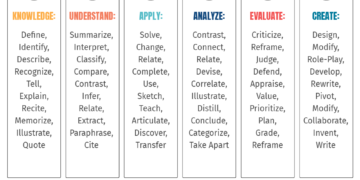Center On The Learner, Foster Employee Lifelong Learning
With the volume, velocity, and complexity of change, organizations must continuously innovate and transform. During their transformation and innovation efforts, many organizations make the mistake of focusing solely on technology while neglecting their people. This approach is short-sighted and ultimately counterproductive. Research conducted in 2023 by McKinsey [1] shows that organizations that focus on both performance and people outperform all others.
The most successful organizations understand that their people are their greatest asset. They prioritize employee Learning and Development, provide their teams with the knowledge and skills necessary to excel in their roles, and foster cultures of learning and innovation to empower them to thrive. This investment in people pays off in the form of higher productivity, greater innovation, improved employee satisfaction, and increased customer satisfaction.
How To Optimize Organizational Performance Through Employee Lifelong Learning
In today’s rapidly evolving business landscape, organizations that fail to invest in their people are at a significant disadvantage. As technology continues to disrupt traditional business models, the ability to adapt and learn quickly has become a key competitive advantage. By investing in people and creating a culture of learning, organizations can stay ahead of the curve and achieve sustained success. Organizations that focus on people, design learning-centric Learning and Development programs, foster a culture of learning, and commit to DEI&B programs tend to outperform their peers. This article examines these three tactics and offers actionable insights to Learning and Development professionals.
1. Center Learning On Learners
One way that organizations can optimize performance through employee development is by ensuring that the Learning and Development programs they offer center on learner needs. Learner-centric learning places the learner at the center of the learning experience. This approach prioritizes the needs, preferences, and goals of the learner, tailoring and curating the learning experience to meet their individual needs. Learner-centric learning is based on the idea that every learner is unique, with their own learning style, preferences, and goals. This approach recognizes that different learners have different needs and that a one-size-fits-all approach is not effective.
In a learner-centric learning environment, learners gain agency for their learning journey as they are encouraged to take ownership of their learning, set their own goals and create their own learning path. This approach fosters a sense of independence and self-motivation, encouraging learners to take responsibility for their own learning and to become lifelong learners. Learner-centric learning also emphasizes the use of technology and other resources to support the learning process. Technology can be used to provide learners with personalized feedback, facilitate collaboration and communication, and create a more interactive and engaging learning experience.
2. Foster A Culture Of Lifelong Learning
Another key factor in optimizing organizational performance is fostering a culture of learning. When employees feel encouraged and supported to continuously improve their skills and knowledge, they are more likely to be engaged and motivated in their work. To foster a culture of lifelong learning in an organization, leaders need to prioritize Learning and Development as a key part of the organizational culture.
How To Create A Culture Of Lifelong Learning
You can lead this in your organization by providing employees with access to Learning and Development programs, including workshops, courses, online learning opportunities, conference attendance, peer-to-peer learning, mentoring, and coaching. Leaders can also encourage learning by modeling the behavior themselves. By demonstrating a commitment to lifelong learning as a Learning and Development leader, you can set an example for your employees and encourage them to follow suit. In addition, organizations can create a supportive learning environment by encouraging collaboration and knowledge sharing among employees through formal and informal peer-to-peer learning programs. This can be achieved through regular team meetings, mentoring programs, and knowledge-sharing platforms.
The Benefits
Organizations that recognize and reward employees who demonstrate a commitment to lifelong learning show better performance results. Reward and recognition can be achieved through performance evaluations, promotions, and other forms of recognition. By fostering a culture of lifelong learning, organizations can improve employee engagement, productivity, and retention. They can also stay ahead of the curve in terms of innovation and competitiveness, creating a more sustainable and successful organization in the long term.
3. Commit To Diversity, Equity, Inclusion, And Belonging
Organizations that align their employee engagement strategy with their DEI&B strategy tend to perform better. Committing to DEI&B is essential for organizations to improve their performance and stay competitive in today’s business environment. By committing to diversity in the workplace, you promote a range of different perspectives and ideas, which can lead to increased creativity and innovation, both of which positively impact performance.
The Benefits
Robust and authentic DEI&B practices can also attract and retain top talent from a variety of backgrounds, which in turn, can enhance organizational performance. In addition, creating an inclusive work environment where all employees feel valued and heard can lead to higher levels of employee engagement and productivity. When employees feel that their unique perspectives and contributions are recognized and appreciated, they are more likely to be committed to their work and invested in the success of the organization.
Furthermore, DEI&B initiatives can improve organizational performance by increasing customer satisfaction and loyalty. By fostering a diverse workforce as a Learning and Development leader, you can help organizations better understand the needs and preferences of different customer groups, which can lead to the development of products and services that are more relevant and appealing to a broader range of customers.
How To Commit To DEI&B
To commit to DEI&B, you will need to examine your organization’s DEI&B and employee experience strategies separately and together to uncover biases, gaps, and overlaps between the two. You will need to involve your DEI&B experts and advisors to provide guidance and perspective in your efforts. In her Harvard Business Review article [2], Elizabeth Tipper offers ten strategies to mitigate bias that can be helpful in your efforts here. It is critical to review biases because you may find out that unconsciously certain practices in your organization may exclude certain employees from opportunities and career growth. Such hindrances must be identified and reversed so your organization truly fosters diversity, equity, inclusion, and belonging.
Conclusion
Organizations that prioritize employee development are more likely to achieve optimal performance. By ensuring your learning programs center on the learner, foster a culture of learning, and commit to DEI&B, your organization can equip your teams with the skills and knowledge necessary to succeed in today’s rapidly changing business environment. In doing so, you will help create a more engaged, motivated, and productive workforce, leading to improved business outcomes and successful long-term performance.
References
[1] Performance through people: Transforming human capital into competitive advantage
[2] 10 Ways to Mitigate Bias in Your Company’s Decision Making




















